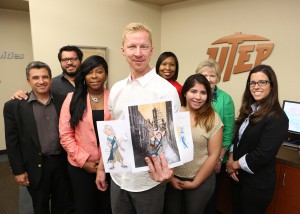
NASA is investing $500,000 in UTEP for the development of an education model that uses narratives to integrate learning of different subjects into an interdisciplinary storyboard.
“NASA’s Minority University Research and Education Project (MUREP) provides support for colleges and universities to build programs that connect students from underrepresented and underserved communities with NASA, giving them the strong foundation they need to pursue and excel in STEM fields,” said MUREP Project Manager Misti Moore. “We are excited to once again engage UTEP in providing knowledge and skills to students through authentic and unique STEM experiences.”
The story-centric approach in this model and its use and reuse of existing STEM content, particularly government resources, is novel. Users can take existing curriculua, lessons and other media and integrate those materials into narratives with characters, storylines and varying plots that can be customized for each educator, instructional program or learner. They are able to select different components of a story (like chapters) and combine them into their own story though each of the chapters contains lessons, video, experiments, etc. that feed the story.
“Very few science, technology, engineering and math (STEM) programs engage learners through the contexts of stories, particularly from topic to topic through a cohesive and connected narrative,” said team leader Nate Robinson from UTEP’s Office of Research and Sponsored Projects. “This proposal changes that through the use of an interdisciplinary team that creates stories driving interactive, inquiry-based learning through multimedia narratives.
“As a team, we’re really excited to see a vision we’ve shared and been developing for years receive funding and traction, and how much more so that it’s from a world renowned leader in innovation, NASA,” Robinson added. “We’re also excited and honored that this model can be used nationally but is largely comprised of local talent – from the creative writer to the artist to the curriculum specialist.”
The model is intended for K-12, though it will start with a fifth through eighth grade focus in August. The development team includes a mix of educators, engineers, graphic artists, creative writers, philosophers, and others.